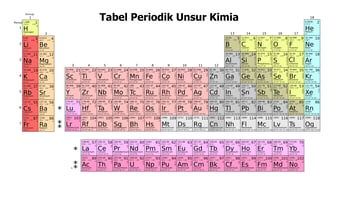Rhenium (Re) 1. Basic Information Atomic Number 75 Symbol Re Atomic Mass 186.23 g/mol Category...
Lutetium
Lutetium
1. Basic Information
| Property | Value |
|---|---|
| Atomic Number | 71 |
| Symbol | Lu |
| Atomic Weight | 174.97 g/mol |
| Category | Rare earth metal, lanthanide |
2. Physical and Chemical Properties
Lutetium is a silvery-white metal that is solid and stable in air. It is the densest and hardest lanthanide element. Lutetium has a melting point of 1663°C and a boiling point of 3395°C. In solution, lutetium is usually present as Lu3+ ions. Lutetium compounds are generally ionic and soluble in water.
3. Presence in Water and Health Effects
Lutetium is rarely found in natural water due to its low abundance in the Earth's crust. However, it can be present in low concentrations in water contaminated with mining waste or rare earth metal processing. Although it is considered to have low toxicity, long-term exposure to lutetium in drinking water can potentially pose health concerns. Further research is needed to fully understand the health effects of lutetium in water.
4. Water Treatment Applications and Removal Methods
Removal of lutetium from water can be done by several methods:
- Ion exchange: Strong acid cation exchange resins are effective for removing Lu3+ ions from dilute solutions.
- Chemical precipitation: The addition of a base or precipitating agent can precipitate lutetium as an insoluble hydroxide or salt.
- Adsorption: Adsorbents such as activated carbon or zeolite can bind lutetium from solution.
- Membrane filtration: Technologies such as nanofiltration or reverse osmosis can separate lutetium ions from water.
5. Industrial Uses in Water Treatment
Although lutetium itself is rarely used directly in water treatment, some related applications can be found:
- As a dopant in sensor materials for monitoring water quality
- In the manufacture of specialized catalysts for the degradation of water contaminants
- As part of neutron detection systems for water safety monitoring
6. Case Studies and Real-World Application Examples
A study in China examined the use of lutetium oxide nanoparticles for photocatalytic degradation of organic dyes in textile wastewater. Results show that Lu2O3 nanoparticles have high photocatalytic activity and can degrade dyes such as methylene blue efficiently under UV light radiation. This indicates the potential use of lutetium compounds in advanced water treatment technologies in the future.
7. Regulatory Guidelines and Standards
Currently, there are no specific guidelines for lutetium in drinking water set by WHO or other major regulatory bodies. However, as a rare earth metal, lutetium may be regulated under general guidelines for metals or inorganic contaminants in some jurisdictions. Regulatory oversight of lutetium and other rare earth metals in water is likely to increase as their use and understanding of their potential impacts increases.
8. Environmental Impacts and Sustainability Considerations
The extraction and processing of lutetium can have significant environmental impacts, including land degradation and potential water contamination. Rare earth metal mining often generates radioactive and acidic waste that requires careful management. In the context of water treatment, the use of lutetium in specialized applications should consider its full life cycle and environmental impacts. Recycling and recovery of lutetium from used products is becoming increasingly important for sustainability.
9. Future Trends and Research in Water Treatment
Current research on lutetium in water treatment includes:
- Development of lutetium-based nanostructured adsorbents for more efficient contaminant removal
- Exploration of luminescent properties of lutetium compounds for water pollutant detection
- Studies on the potential use of lutetium isotopes in underground water flow tracking and monitoring
- Investigation of the effectiveness of lutetium complexes in the catalytic degradation of persistent organic pollutants
10. Interesting Facts Related to Water Treatment
- Lutetium is the heaviest lanthanide element and is considered the rarest rare earth element in the earth's crust.
- Although rarely used in conventional water treatment, lutetium has unique properties that make it attractive for specialized applications such as radiation monitoring in water systems.
- Some research suggests that lutetium compounds can have antimicrobial properties, which could potentially be useful in water disinfection.
- The radioactive isotope lutetium-177 is being investigated for cancer treatment, which could have implications for the management of medical radioactive waste in water systems.
.png)
.png?width=50&name=Logo_Watermart_Perkasa-removebg-preview%20(1).png)
